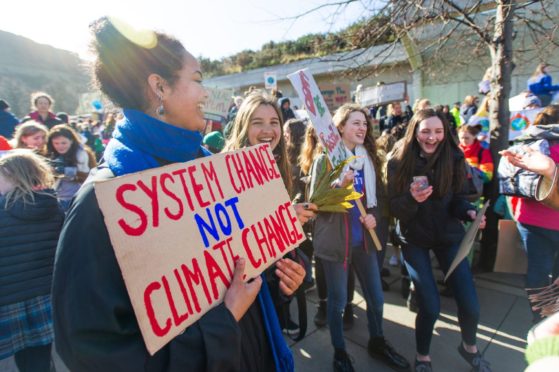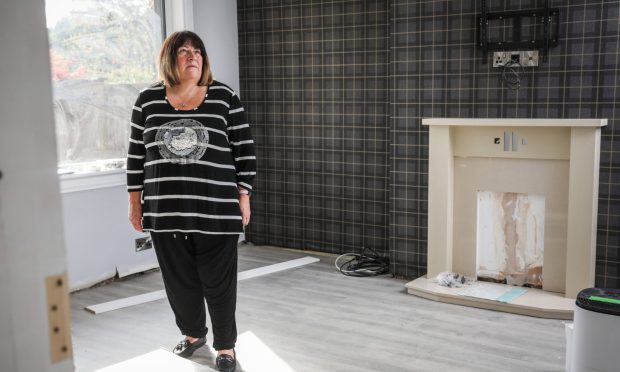Sir, – I live at a place whose name in Gaelic means the place where the boats were drawn up.
I am now half a mile from the shore and several metres above the water. At the Battle of Bannockburn in 1314 a big concern with both sets of troops was malaria as mosquitoes were plentiful in a much warmer Scotland.
There is a vast amount of evidence easily accessed that climate change has been a continuous factor of the world’s weather for hundreds of thousands of years.
This is not to suggest I think we should continue pouring out dangerous poisonous emissions or that we should continue to destroy our natural environment.
It is to suggest our climate, climate change and the global warming we are presently experiencing is largely a result of relationship with the sun and how close or how far we are from it, which changes slowly and steadily on a continuous basis.
A blink of an eye ago in world time we were skating on the Thames.
So no matter what we do our control of our weather will largely be determined by forces over which we have very limited control. Dealing with that should be the overriding priority.
As big a concern to me is population explosion in many parts of the world.
The population of West Africa for instance is forecast to double before 2025 with Nigeria expected to reach 400 million people.
Unless increased food production becomes a major concern we are looking at real trouble.
But 6,000 years ago the vast Sahara desert was instead a forest and it had been a vast desert before that and at one point partly vast sea.
In recent years a Sahara Forest Project has been launched to campaign for a worldwide effort to regreen the Sahara.
This strikes me as really worthwhile as a potential huge increase in food production is possible with it.
And in fact a huge replacement of the positive and useful growth which improves our atmosphere as our destruction of forests in many part of the world is damaging it.
Dave McEwan Hill.
1 Tom Nan Ragh,
Dalinlongart, Sandbank.
Revolution in food production is needed
Sir, – Many thanks to D. Norrie (Channel 4’s farming conflict, Courier, January 16)for presenting us with the blueprint as to how both media and financial firms interact with their products and those who promote and benefit from them.
I believe most of what he sketched out is standard in today’s, consumer-led world.
However there seems little doubt that today’s farming methods and the consequent dietary factors have left a deep scar on both the viability of the farming industry, the accompanying ecology and the land on which their crops grow.
In 2017 the National Farmers Union agreed with Michael Gove that we were only 30 years away from the eradication of soil fertility. This is due to the methods used and the pesticides, herbicides and fertilisers employed to gain maximum harvest.
In addition today’s heavy machinery destroys the mycelium which helps pass nutrients and other benefits to the crops.
It also helps bind the soil together to hinder erosion in dry conditions. In addition much of the industry also requires subsidies from the public purse to remain viable.
The past 50 years or so has seen the number of insects, invertebrates and worms drop by over 50% which many believe to be the result of chemical spraying and other inputs.
This has a direct effect on bird populations as all nestlings require invertebrates for the first few days of life.
Competing for these diminishing food resources are also the 50 million pheasants and countless red leg partridges introduced annually.
Fields have been enlarged, hedgerows uprooted making nesting sites difficult to identify for our birds too.
Similar issues face our small mammalian population in regard to food sources and suitable habitats as more land is brought under the plough.
These are some of the issues which have led George Monbiot and others to look for alternative methods of food production not so damaging to our environment and which might allow the invertebrates, birds, mammals and various indigenous plant species to recover.
Mr Norrie did not propose any changes to the old farming model but, given the above, it seems obvious the old methods cannot continue in the same vein if we are to guarantee enough to eat and protect and repair our natural heritage.
How should we proceed?
George Murdoch.
4 Auchcairnie Cottages, Laurencekirk.
NHS cash conundrums
Sir, – Recently I learned two things about the NHS in Scotland.
Firstly, full pay sick leave is available to all employees.
Second, hospitals pay a fine each time they fail to meet a target.
The sick pay leave is calculated not only on basic salary but includes higher rate pay for any date in the absence when a night shift is anticipated.
How many traders, manufacturers, distributors or administrators could afford this level of sick pay? Very few, if any.
I do not know to whom or where the fines are paid but the whole idea does not make sense.
People do not decide to be ill or have an accident as a matter of convenience to the NHS.
Prime Minister Boris Johnston plans to make a huge increase in funding.
Will the money actually reach the level of clinicians?
The administrative and management services of the NHS must exhaust a massive part of the NHS funding.
A A Bullions.
6 Glencairn Crescent,
Leven.
Sturgeon a bar to independence
Sir, – All throughout the 1980s and 90s the Tories had no democratic mandate in Scotland.
Yet despite this they laid waste to Scottish industry and used Scotland as a guinea pig for such things as the poll tax and PFI on the Skye bridge.
The feeble 50 Labour MPs continually moaned about the Tories having no mandate to pursue these policies and argued for a referendum on devolution.
These pleas fell on deaf ears. The Tories denied democracy in Scotland for 18 years. They continuously refused to devolve power or hold any referendum.
Why then Nicola Sturgeon would think that her requests for a Section 30 from Boris Johnson would be treated any differently than those of Labour in the 1980s is something of a puzzle.
Sturgeon has wasted the last four years on a pointless exercise in trying to stop Brexit.
She has negated independence, preferring instead to share a platform and get praise from individuals such as Alastair Campbell.
By ruling out any other course of action Sturgeon has now bound the SNP Government in a Union Jack coloured straitjacket.
There was a Plan B but, this was rejected at the SNP conference.
This strategy has worked out well for the coterie of SNP MPs, MSPs and their well-paid staff.
Independence will never be achieved by cautious gradualist centrism.
Sturgeon should step aside as she is now an obstacle to independence.
Alan Hinnrichs.
2 Gillespie Terrace,
Dundee.









